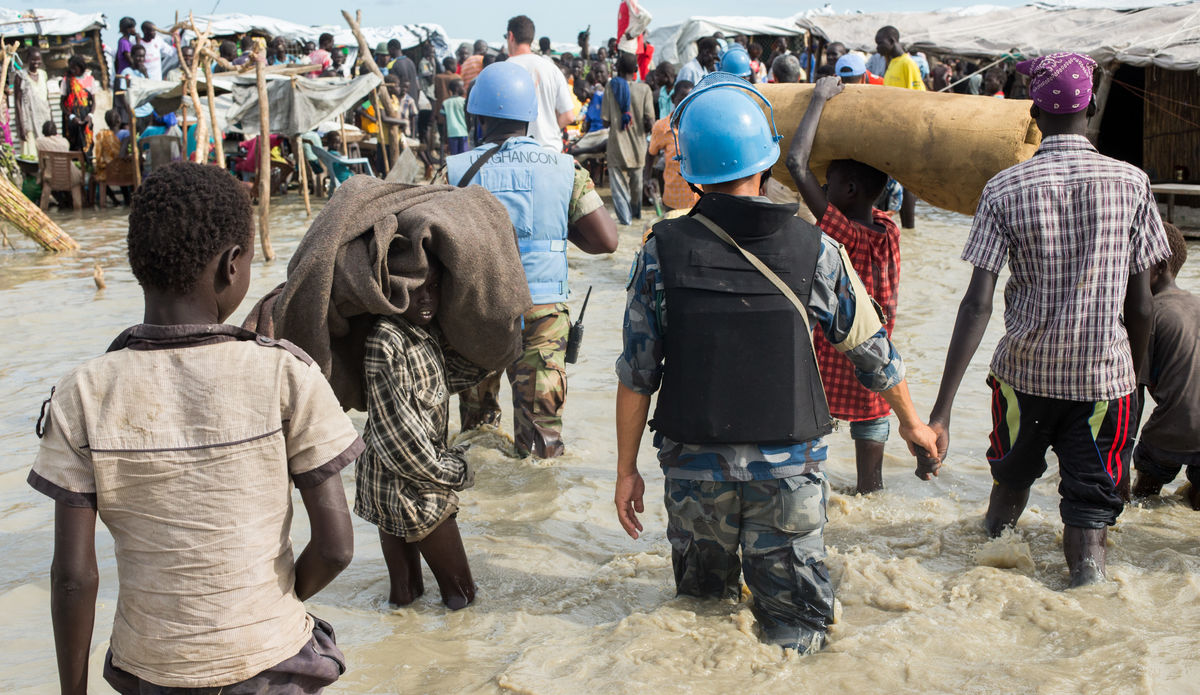The Protection of Civilians (POC) is a responsibility that includes all parts of a peacekeeping mission: civilian, police and military. In many cases, peacekeeping missions are authorized to use all necessary means, up to and including the use of deadly force, to prevent, deter or respond to threats of physical violence against civilians. The POC mandate is limited to where the Mission operates and has the necessary capabilities. It is also without prejudice to the primary responsibility of the host government to protect their populations.
The effective implementation of the POC mandate requires a comprehensive, integrated, and well-planned approach to address the various challenges missions with the mandate face. This is the foundation of the 2023 Department of Peace Operations POC Policy, which not only provides the conceptual framework, guiding principles, and key considerations for the implementation of the POC mandate but also promotes consistency in approach while recognizing the varied operational contexts faced by UN Peacekeeping operations and the requirement for flexibility to respond to changing environments and the different resources available across the lifecycle of a mission. The 2020 DPO POC Handbook is aligned with the POC Policy, and brings together the best practices of POC in UN peacekeeping; it captures the lessons from a wide range of experiences and provides all mission components (civilian, police, and military) with useful tools. Starting with UNAMSIL, a total of 16 peacekeeping missions were mandated to protect civilians, five of which are deployed today (MONUSCO, MINUSCA, UNMISS, UNIFIL and UNISFA).
Guiding Principles of POC
The POC mandate in peacekeeping is guided by a set of principles:
- Protecting civilians is the primary responsibility of governments;
- Peacekeepers with a mandate to protect civilians have the authority and responsibility to provide protection within their capabilities and areas of deployment where the government is unable or unwilling to protect;
- The protection of civilians mandate is a whole-of-mission activity, not only a military task, which embodies an active duty to protect;
- Protecting civilians is done in cooperation with humanitarian actors and with respect for humanitarian principles;
- The protection of civilians mandate is consonant with the principles of peacekeeping, including the consent of the host state, impartial mandate implementation, and the use of force only in self-defence or as authorized by the Security Council;
- The protection of civilians mandate is a priority mandate, pursuant to Security Council resolutions.
POC Activities
The primary responsibility to protect civilians lies with the host state. Consequently, the first role of peacekeepers is to support governments in upholding their protection responsibilities. Depending on the nature of the threat to civilians, the peacekeeping mission will carry out a range of activities including engaging with parties to the conflict and affected communities, providing physical protection and the establishment of a protective environment.
- All mission components engage in dialogue and advocacy, such as support for reconciliation, peace agreements or mediation, liaison with the government and armed actors, or the resolution of local conflicts. Missions also engage in human rights investigations and reporting
- Peacekeepers also take action to provide physical protection, usually by deterring attacks on civilians through protective presence and active patrolling. Effective patrols are informed by early warning systems, community alert networks, community liaison assistants (CLAs), public information, and reporting systems. Peacekeepers can also provide safe passage or refuge to help civilians escape violence. When necessary, peacekeepers employ all necessary means, including deadly force, to physically protect civilians.
- Peacekeeping missions also conduct activities that support the establishment of a protective environment where civilians are less at risk of violence. The majority of these activities consist of strengthening the government’s capacities to protect, including through the rule of law, security sector reform, and inclusive political processes. Mission personnel are also engaged in building the capacity of national authorities to promote and respect human rights, as well as the capacity of communities and civil society.
POC Actors
- The host State has the primary responsibility to protect civilians;
- · The Security Council provides protection of civilians mandates; · DPO and DOS plan, deploy and manage peace operations, which includes the development of policy and guidance to inform the implementation of POC mandates, assistance in the development of POC strategies by missions, and the provision of training materials; · Troop and police-contributing countries provide the personnel and assets for peacekeeping operations;
- · Peacekeepers on the ground implement the mandate provided to them;
- · Humanitarians and other protection actors on the ground coordinate with peacekeepers; and
- · Local populations share critical information on threats and risks with peacekeepers and contribute to local protection plans.
The Role of POC Advisors
POC is a whole-of-mission activity – not only military and police, but also civilian personnel play an essential role in protecting civilians. Dedicated personnel, including Protection of Civilians Advisers, support the implementation of the POC mandate and ensure that POC concerns are appropriately mainstreamed and prioritized within the mission. They perform an advisory, coordination, monitoring, and reporting role. Specifically, Protection of Civilians Advisers are responsible for working with mission components and mission leadership to develop a mission-wide POC strategy, establish POC coordination structures, and develop and regularly update POC threat assessments.
The below video highlights some key concepts on the Protection of Civilians (POC) in a United Nations Peacekeeping context and showcases the three tiers of POC actions.

